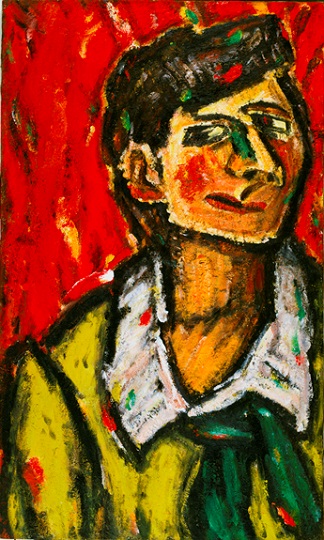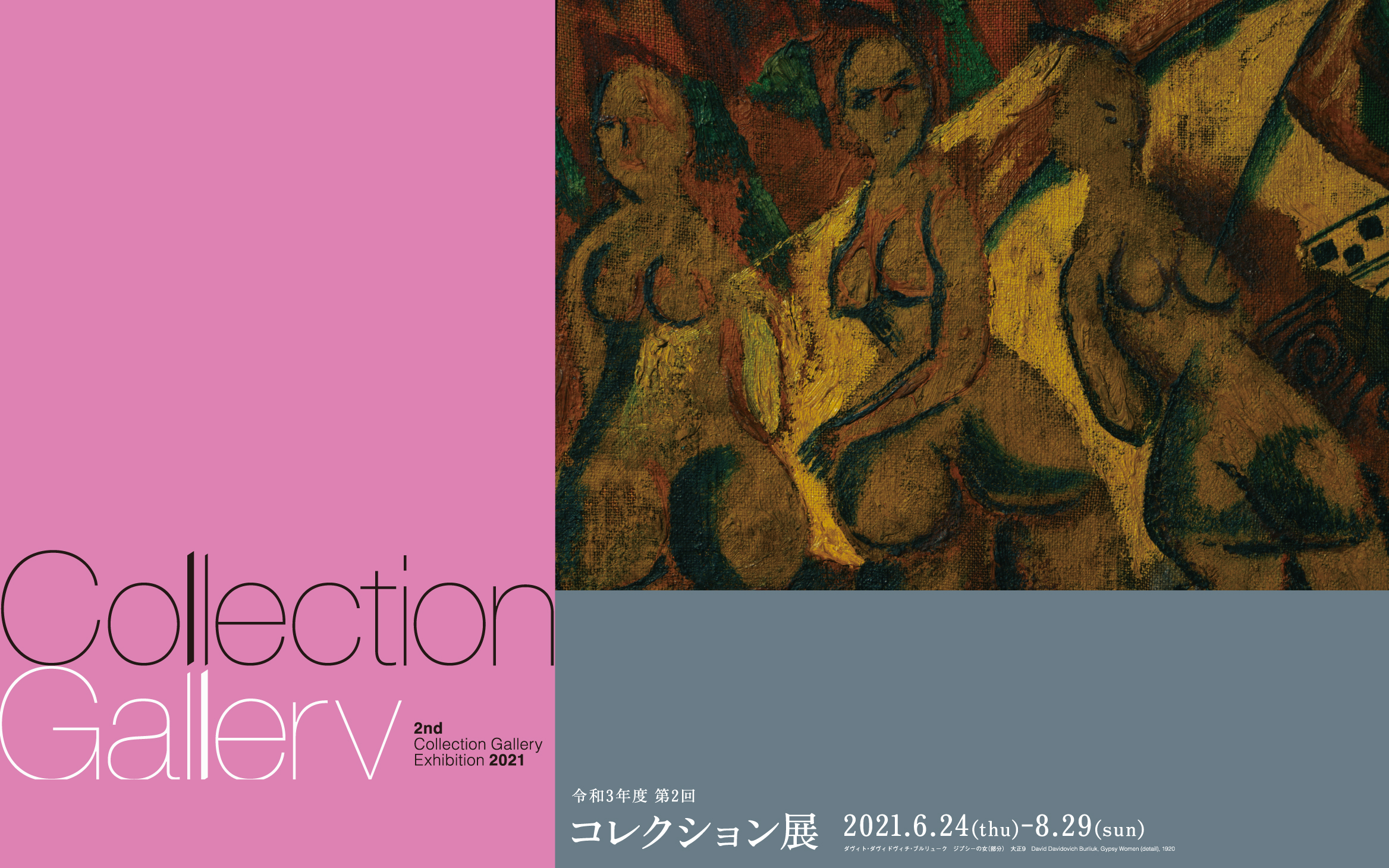
Collection Gallery
2nd Collection Gallery Exhibition 2021–2022
2021.06.24 thu. - 08.29 sun.
Selected Works of Western Modern Art Arshile GORKY, Birthday Greetings, 1931
This section features selected works of Western modern art from our collection or deposited to the museum. During the current term, we are pleased to present two pieces newly acquired in fiscal 2020, the watercolor Rythme by Sonia Delaunay-Terk and the drawing Birthday Greetings by Arshile Gorky, along with related works.
Sonia Delaunay-Terk was born in 1885 in a small village in what is now Ukraine, and moved to Paris after attending art school in Karlsruhe in western Germany. In Paris she married the painter Robert Delaunay, and they collaborated on a systematic study of painting based on scientific color theories, focusing on the effects of color contrasts, and developed a movement known as Orphism (non-objective painting aimed at integrating light, color, shape, and movement). In this process they pursued the concept of simultaneisme (simultaneity), in which richly varied effects emerge from interactions among color contrasts and nuances and combinations of geometric shapes. This work, in which large and small circles, rectangles of varying dimensions, and triangles are superimposed, is a representative example of Delaunay-Terk's experimentation with simultaneity. The practice of composing pictures using pure visual components such as color and shape was widespread among avant-garde artists at the time. Also shown here is a work by Hannah Hoch, who was of the same generation as Delaunay-Terk and was an active member of Berlin Dada at the time.
Delaunay-Terk extended the concept of simultaneity beyond painting to the applied arts, particularly textiles, and was also active in the fields of fashion, theater set design and interior design. In 2014, the largest-ever retrospectives of her work were held in Paris and London, reaffirming the importance of her practice.
Arshile Gorky was born Vostanik Manoug Adoian in 1904, in Armenia under the rule of the Ottoman Empire. His mother died during the genocide of Armenians in Ottoman-controlled territories, and in 1920 he moved to the United States to join his father who had already emigrated. After attending art school in Boston, where he was influenced by Post-Impressionism and Cubism, he developed a unique style of abstraction featuring biomorphic shapes resembling living organisms. Gorky's enthusiastic study of modern European art was aided by advice from David Burliuk, a key figure among the Russian Futurists who fled his homeland for New York after a stay in Japan. This work is a card that Gorky sent Burliuk on his 49th birthday. In the center of the picture is the initial "B" for Burliuk, and a shape that appears to be a portrait of Burliuk is visible on the right. The period between 1927 and the mid-1930s is known as a time of Cubist experimentation for Gorky, but this work prominently features the Surrealist-oriented use of line and form that he later developed.
After suffering a series of misfortunes in his personal life, Gorky died by suicide in 1948 at the young age of 44. However, in this fine work we see not tragedy but a sense of humor tinging the somewhat fantastical imagery, and a manifestation of the warm friendship between the two painters.
Strange and Attractive Japanese Painting NISHIYAMA Suisho, Kinshojo, 1921
Viewers of art are fascinated by the beauty of meticulous renderings and skilled technique, for example in photorealistic drawings made with only a pencil, and in the Japanese crafts of the late 19th and early 20th century known for their stunning technical wizardry. On the other hand, people are also drawn to works with an eerie yet enchanting atmosphere. Many works that exert this peculiar attraction, described in Japanese with the difficult-to-translate adjective ayashii, are featured in the exhibition Ayashii: Decadent and Grotesque Images of Beauty in Modern Japanese Art scheduled to be held in Osaka from July. Among them are works from this museum's collection, including those of Kainosho Tadaoto. In this area we present ayashii works with unique qualities, including those by artists featured in the exhibition.
Tamura Soryu's Western Boy is indeed an image of a boy evidently from some Western country, but his appearance is not cute and childish as one might imagine from the title, and there is something strange about the distant look in his eyes and the highly realistic depiction of the mouth. The unfamiliar design of his clothing and his incomprehensible pose only add to the uncanny atmosphere. Tamura independently taught himself oil painting and was an important artist central to the early years of Yoga, or Japanese Western-style painting, in Kyoto. While this work belongs to the Nihonga (modern Japanese-style painting) genre, the shadows are unusually meticulously rendered. The peculiar atmosphere may reflect the fact that this work dates from a transitional period when techniques of Western painting had not yet been fully absorbed.
Mysterious and Sacred Light by Kondo Komei is a striking work in which a single, large white flower in the foreground contrasts with red flowers spread across the background. Kondo's father and brother were Buddhist monks of the Tendai sect, and he too belonged to the clergy as a child. That experience may be reflected in this work, which is reminiscent of the land of the dead as described in Japanese Buddhism.
Japanese Painting of Living Things NISHIMURA Goun, Rabbits, c. 1928
Recently, the news reported that the number of pet owners has risen due to increased time spent at home during the pandemic. However, there have also been reports of a growing number of cases of pet abandonment, which are truly heartbreaking to hear. Animals have been inextricably bound to our lives throughout human history, and to give an example of this theme in ancient works of art, many waka poems in the classic 8th-century anthology the Man'yoshu deal with deer. It seems that many of these express the poets' own romantic feelings through images of deer engaging in autumn courtship rituals. Because poems from the Man'yoshu were also popular as painting subjects, there are many paintings of deer accompanied by autumnal vegetation. In addition to deer, cattle also often appear in Japanese paintings. In old times people transported their belongings in ox carts, and nobles used them as a mode of transportation. Cattle also played a crucial role in agricultural processes such as ta-okoshi, plowing of rice paddies and spreading of fertilizer, and shirokaki, flattening of the paddies'surface. According to the East Asian zodiac, this year is the Year of the Ox, but in past centuries the twelve animals were also used to indicate the hour of the day. Today the period between 2:00 AM and 2:30 AM is called ushimitsudoki (third quarter of the hour of the ox) and the kanji characters for "noon" literally read "exactly ox." Animals are closely tied to our daily lives even in ways we do not recognize.
Kyoto painters frequently depicted animals, and ti is well known that the Kyoto City Zoo played a major role in their work. Takeuchi Seiho, a renowned master of Kyoto painting, made sketching trips to the zoo, which opened in April 1903, and there are also paintings of various animals by his pupils Tsuchida Bakusen, Nishimura Goun and Miki Suizan. Nishimura's command of this genre was particularly remarkable, and his renderings of creatures are extraordinarily charming and lifelike.
The Prints of HASEGAWA Kiyoshi HASEGAWA Kiyoshi, Anémones [Anemones], 1930
The printmaker Hasegawa Kiyoshi was born in Yokohama in 1891 and active in France. His art career began around the age of 20, when he started studying drawing under Kuroda Seiki and oil painting under Okada Saburosuke and Fujishima Takeji, and receiving commissions for literary magazine covers and illustrations, he began producing woodcuts and copperplate prints. In 1919, at the age of 28, he moved to Paris, where he exhibited in salons such as the Salon d'Automne and devoted the remainder of his life to printmaking.
Hasegawa is best known for his revival of the technique of maniere noire (mezzotint), but he also worked with a wide range of other copperplate printmaking techniques. Copperplate printmaking can be broadly divided into direct (direct mark-making) and indirect (corrosion-method) approaches to preparing plates. Direct approaches involve techniques for marking the plate surface directly with a sharp implement such as a needle or burin, including burin (engraving), pointe-seche (dry point), and maniere noire (mezzotint). Indirect approaches, involving exposing and corroding the drawn-on areas, include eau-forte (etching) and aquatinte (aquatint). Bernard Leach, who had come to Japan from Britain, introduced etching to the artists of the Shirakaba (White Birch) group, and corrosion methods became popular in Japan after the 191 Os, but the majority of Hasegawa's works employ direct approaches. Especially in his engravings, the hard-edged beauty of the incised lines is emphasized, and familiar varieties of flowers and plants are delicately and precisely rendered. Working with dry point, which enables the artist to make lines with freer movements of the hands than engraving, he produced landscape and still life works that have the feel of sketches. This exhibit presents around 50 works, including early woodblock prints and richly colorful oil paintings, out of a collection of approximately 180 works carefully selected by Hasegawa himself.
SATOMI Katsuzo and Japanese painters who studied in France SATOMI Katsuzo, Portrait of a Woman, 1976
This year marks 40 years since the death of the Kyoto-born painter Satomi Katsuzo (1895-1981).
His nearly 70-year painting career began during the Taisho Era (1912-1926). This was a time when new developments in art were surging into Japan from France and other Western countries, and styles were changing drastically. Many artists went to study abroad in Western countries so as to engage with these new movements directly, aiming to master authentic painting techniques at the source and return triumphantly to Japan, but ti seems this was no easy task. After returning home, many artists found themselves incapable of doing what they had done while studying abroad. They were often troubled by their inability to depict landscapes or human figures in Japan as they had overseas, evidently because of the differences in the physical and cultural climate, surroundings, and people's appearance in Europe and in Japan.
Two other Kyoto-born painters, Yasui Sotaro and Umehara Ryuzaburo, fell into creative slumps after coming back to Japan. Among painters returning from the West, quite a few incorporated the techniques and materials of Nihonga (modern Japanese-style painting) into oil painting, or took up Nihonga itself, likely because of heightened awareness of the need to rethink their own approaches to creative expression within the culture into which they were born and raised.
In this context, Satomi was an exception. He had been inspired to go to France by his admiration for Van Gogh, and after meeting Maurice de Vlaminck and becoming a Fauvist painter under his guidance, he maintained that fundamental stance for the rest of his life. Of course his painting underwent stylistic changes, but at the roots his commitment remained unwavering, and he continued to follow the precepts of his teacher Vlaminck until just before his death.
In this section we present works, including Nihonga, by painters who made the journey to France around the same time, with a particular focus on Satomi and his associate Saeki Yuzo.
Exhibition Period
2021.06.24 thu. - 08.29 sun.
[First term]
6.24 thu.~7.25 sun.
[Second term]
7.27 tue.~8.29 sun.
Themes of Exhibition
Selected Works of Western Modern Art
Strange and Attractive Japanese Painting
Japanese Painting of Living Things
The Prints of HASEGAWA Kiyoshi
SATOMI Katsuzo and Japanese painters who studied in France
[Outside] Outdoor Sculptures
List of Works
2nd Collection Gallery Exhibition 2021–2022 (131 works in all) (PDF 433KB)
A-Chronicle-of-Modern-Crafts-Works-from-the-National-Museum-of-Modern-Art (PDF 269KB)
Free Audio Guide App
How to use Free Audio Guide (PDF)
Hours
9:30AM–5:00PM
2021.08.03 tue. - 08.22 sun.: 9:30AM–6:00PM
*Fridays and Saturdays: 9:30AM–8:00PM
*Admission until 30 min. before closing
*Opening hours is subject to change, due to the prevention against COVID-19 pandemic. Please check the updated information, before your visit.
Admission
Adult: 430 yen (220 yen)
University students: 130 yen (70 yen)
High school students or younger,seniors (65 and over): Free
*Figures in parentheses are for groups of 20 or more.
Collection Gallery Free Admission Days
June 26, July 3, August 28, 29, 2021
List of Works
2nd Collection Gallery Exhibition 2021–2022 (131 works in all) (PDF 433KB)
A-Chronicle-of-Modern-Crafts-Works-from-the-National-Museum-of-Modern-Art (PDF 269KB)
Free Audio Guide App How to use Free Audio Guide (PDF)



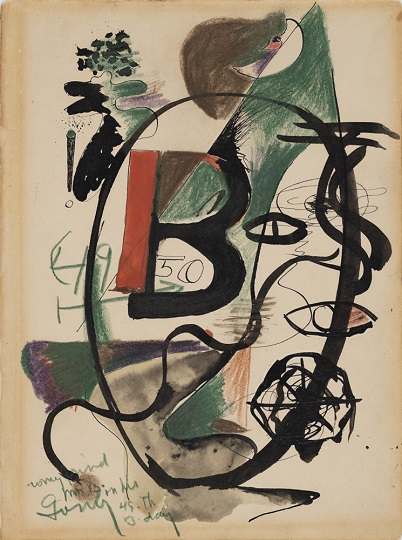
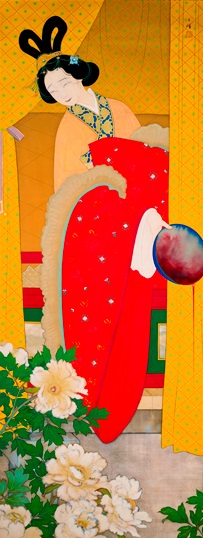
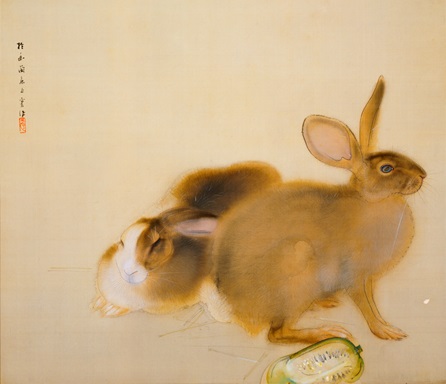
![HASEGAWA Kiyoshi, Anémones [Anemones], 1930](https://www.momak.go.jp/English/wp-content/uploads/sites/2/2022/01/2021CG2_img005.jpg)
